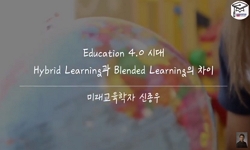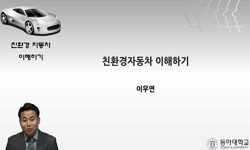가압경수로의 일차계통 제염을 위해 개발된 HYBRID 제염제의 재료부식 특성을 틈부식 시험방법을 사용하여 수행하였다. 기존 제염제의 부식특성과 비교하기 위하여 상용 제염제인 OA, CITROX 제...
http://chineseinput.net/에서 pinyin(병음)방식으로 중국어를 변환할 수 있습니다.
변환된 중국어를 복사하여 사용하시면 됩니다.
- 中文 을 입력하시려면 zhongwen을 입력하시고 space를누르시면됩니다.
- 北京 을 입력하시려면 beijing을 입력하시고 space를 누르시면 됩니다.
https://www.riss.kr/link?id=A100157473
- 저자
- 발행기관
- 학술지명
- 권호사항
-
발행연도
2014
-
작성언어
Korean
-
주제어
가압경수로 ; 틈부식 ; 환원제염제 ; 옥살산 ; PWR ; HYBRID ; Crevice corrosion ; Reductive decontamination agent ; Oxalic acid ; HYBRID
-
등재정보
KCI등재,SCOPUS,ESCI
-
자료형태
학술저널
-
수록면
199-209(11쪽)
-
KCI 피인용횟수
3
- DOI식별코드
- 제공처
-
0
상세조회 -
0
다운로드
부가정보
국문 초록 (Abstract)
가압경수로의 일차계통 제염을 위해 개발된 HYBRID 제염제의 재료부식 특성을 틈부식 시험방법을 사용하여 수행하였다. 기존 제염제의 부식특성과 비교하기 위하여 상용 제염제인 OA, CITROX 제염제의 부식특성도 함께 평가하였다. 시험재료는 가압경수로의 일차계통의 주 재료인 Alloy 600과 304 SS을 대상으로 시험하였다. 틈부식 시험은 가혹조건의 부식시험으로써 내식성이 강한 원전 구조재료의 건전성을 짧은 시간에 잘 확인할 수 있었다. 시험결과 OA와 CITROX 제염제에서는crevice 시편 표면에 pitting과 IGA가 나타났으나 HYBRID 제염제에서는 국부부식이 전혀 발생되지 않았다. 무게감소 측정결과 HYBRID 제염조건에서는 1.3×10-3 μm/h 이하의 매우 낮은 부식속도를 나타내었다. 반면에, OA 제염제의 경우 Alloy600은 4.0×10-2 μm/h 로 비교적 균일한 부식율을 나타내었으나, 304 SS의 경우 pH = 2.0 이하에서 급격한 가속부식을 나타내었다. HYBRID 제염제의 경우 일반부식에서뿐만 아니라 crevice 부식조건에서도 거의 부식이 일어나지 않아 PWR 계통제염 시 산화막 용해 후 제염제가 계통재료에 노출되어도 재료의 건전성이 입증되었다.
다국어 초록 (Multilingual Abstract)
Crevice corrosion tests were conducted to examine the corrosion properties of HYBRID (HYdrazine Base Reductive metalIon Decontamination) which was developed to decontaminate the PWR primary coolant system. To compare the corrosionproperties of HYBRID ...
Crevice corrosion tests were conducted to examine the corrosion properties of HYBRID (HYdrazine Base Reductive metalIon Decontamination) which was developed to decontaminate the PWR primary coolant system. To compare the corrosionproperties of HYBRID with commonly existing decontamination agents, oxalic acid (OA) and citric oxalic acid (CITROX)were also examined. Type 304 Stainless Steel (304 SS) and Alloy 600 which are major components of the primary coolantsystem in Pressurized Water Reactor (PWR) were evaluated. Crevice corrosion tests were conducted under very aggressiveconditions to confirm quickly the corrosion properties of primary coolant system structure components which have highcorrosion resistance. Pitting and IGA were occurred in crevice surface under OA and CITROX conditions. But localizedcorrosion was not observed under HYBRID condition. Very low corrosion rate of less than 1.3×10-3 μm/h was observedunder HYBRID condition for both materials. On the other hand, under OA condition, Alloy 600 indicated comparativelyuniform corrosion rate of 4.0×10-2 μm/h but 304 SS indicated rapid accelerated corrosion in lower case than pH 2.0. Incase of HYBRID condition, general corrosion and crevice corrosion were scarcely occurred. Therefore, material integrityof HYBRID in decontamination of primary coolant system in pressurized water reactor (PWR) reactor was conformed.
목차 (Table of Contents)
- Abstract
- 요약
- 1. 서론
- 2. 실험 방법
- 2.1 Crevice 시험시편 및 제염제 준비
- Abstract
- 요약
- 1. 서론
- 2. 실험 방법
- 2.1 Crevice 시험시편 및 제염제 준비
- 2.2 틈부식 실험
- 3. 실험 결과 및 고찰
- 3.1 제염제의 영향
- 3.2 pH의 영향
- 3.3 CRUD 및 oxalate 형성 고찰
- 3.4 HYBRID 제염제의 부식 및 제염성능
- 4. 결론
- 감사의 글
- REFERENCES
참고문헌 (Reference)
1 J. Y. Jung, "The Evaluation of Crevice Corrosion of Inconel-600 and 304 Stainless Steel in Reductive Decontamination Solutions" 2014
2 C. Giacomelli, "The Effect of Oxalic Acid on the Corrosion of Carbon Steel" 51 (51): 105-, 2004
3 ASTM, "Standard Test Methods for Pitting and Crevice Corrosion Resistance of Stainless Steels and Related Alloys by Used of Ferric Chloride Solution"
4 J. Bjerrum, "Stability Constants" 1958
5 D. Bradbury, "Review of Decontamination Technology Development 1977-2000" BNES 8 : 173-178, 2000
6 X. Shan, "Effect of Polymer and Ceramic Crevice Formers on the Crevice Corrosion of Ni-Cr-Mo Alloy 22" 66 (66): 105005-, 2010
7 U.S. Department of Energy, "DOE FUNDAMENTALS HANDBOOK" 1993
8 R. Navid, "Crevice Corrosion Theory, Mechanisms and Prevention Methods" 215-, 2007
9 J.P. Michalko, "Compilation of Corrosion Data on CAN-DECON, Volume1: General, Galvanic, Crevice, and Pitting Corrosion Data From CANDU and BWR Tests" London Nuclear Ltd 4-7, 1985
10 E. B. Borghi, "Cleaning of Stainless Steel Surfaces and Oxide Dissolution by Malonic and Oxalic acids" 229 : 115-123, 1996
1 J. Y. Jung, "The Evaluation of Crevice Corrosion of Inconel-600 and 304 Stainless Steel in Reductive Decontamination Solutions" 2014
2 C. Giacomelli, "The Effect of Oxalic Acid on the Corrosion of Carbon Steel" 51 (51): 105-, 2004
3 ASTM, "Standard Test Methods for Pitting and Crevice Corrosion Resistance of Stainless Steels and Related Alloys by Used of Ferric Chloride Solution"
4 J. Bjerrum, "Stability Constants" 1958
5 D. Bradbury, "Review of Decontamination Technology Development 1977-2000" BNES 8 : 173-178, 2000
6 X. Shan, "Effect of Polymer and Ceramic Crevice Formers on the Crevice Corrosion of Ni-Cr-Mo Alloy 22" 66 (66): 105005-, 2010
7 U.S. Department of Energy, "DOE FUNDAMENTALS HANDBOOK" 1993
8 R. Navid, "Crevice Corrosion Theory, Mechanisms and Prevention Methods" 215-, 2007
9 J.P. Michalko, "Compilation of Corrosion Data on CAN-DECON, Volume1: General, Galvanic, Crevice, and Pitting Corrosion Data From CANDU and BWR Tests" London Nuclear Ltd 4-7, 1985
10 E. B. Borghi, "Cleaning of Stainless Steel Surfaces and Oxide Dissolution by Malonic and Oxalic acids" 229 : 115-123, 1996
11 OECD NEA, "Chemical Thermodynamics of Compounds and Complexes of U, Np, Pu, Am, Tc, Se, Ni and Zr with Selected Organic Ligands”, Vol. 6" 192-, 2005
12 R. Riess, "Advanced Nuclear Technology International" 2-13, 2009
13 S. Sharland, "A Review of the Theoretical Modeling of Crevice and Pitting Corrosion" 27 : 289-323, 1987
14 C. J. Wood, "A Review of the Application of Chemical Decontamination Technology in the United States" 23 (23): 35-80, 1990
15 H. J. Won, "A Feasibility Study on the Decontamination of Type 304 Stainless Steel by N2H4 Base Solution" 26 (26): 1327-1330, 2014
동일학술지(권/호) 다른 논문
-
- 한국방사성폐기물학회
- 박병흥
- 2014
- KCI등재,SCOPUS,ESCI
-
처분 심도의 지하수 유량이 처분공에서 누출될 것으로 가정된 방사성핵종의 이동에 끼치는 영향 평가
- 한국방사성폐기물학회
- 고낙열
- 2014
- KCI등재,SCOPUS,ESCI
-
- 한국방사성폐기물학회
- 이두호
- 2014
- KCI등재,SCOPUS,ESCI
-
공정부산물의 방사선적 특성과 처분방안에 관한 기본 연구
- 한국방사성폐기물학회
- 정종태
- 2014
- KCI등재,SCOPUS,ESCI
분석정보
인용정보 인용지수 설명보기
학술지 이력
| 연월일 | 이력구분 | 이력상세 | 등재구분 |
|---|---|---|---|
| 2024 | 평가예정 | 해외DB학술지평가 신청대상 (해외등재 학술지 평가) | |
| 2021-07-28 | 학술지명변경 | 한글명 : 방사성폐기물학회지 -> Journal of Nuclear Fuel Cycle and Waste Technology |  |
| 2021-01-01 | 평가 | 등재학술지 유지 (해외등재 학술지 평가) |  |
| 2020-01-01 | 평가 | 등재학술지 유지 (재인증) |  |
| 2017-01-01 | 평가 | 등재학술지 유지 (계속평가) |  |
| 2014-08-07 | 학술지명변경 | 외국어명 : Journal of Nuclear Fuel Cycle and Waste Technology (Korean) -> Journal of Nuclear Fuel Cycle and Waste Technology |  |
| 2013-11-26 | 학술지명변경 | 외국어명 : Journal of the Korean Radioactive Waste Society -> Journal of Nuclear Fuel Cycle and Waste Technology (Korean) |  |
| 2013-01-01 | 평가 | 등재학술지 유지 (등재유지) |  |
| 2010-01-01 | 평가 | 등재학술지 선정 (등재후보2차) |  |
| 2009-01-01 | 평가 | 등재후보 1차 PASS (등재후보1차) |  |
| 2008-01-01 | 평가 | 등재후보학술지 유지 (등재후보1차) |  |
| 2006-01-01 | 평가 | 등재후보학술지 선정 (신규평가) |  |
학술지 인용정보
| 기준연도 | WOS-KCI 통합IF(2년) | KCIF(2년) | KCIF(3년) |
|---|---|---|---|
| 2016 | 0.17 | 0.17 | 0.17 |
| KCIF(4년) | KCIF(5년) | 중심성지수(3년) | 즉시성지수 |
| 0.15 | 0.16 | 0.409 | 0.08 |






 ScienceON
ScienceON 코리아스칼라
코리아스칼라






